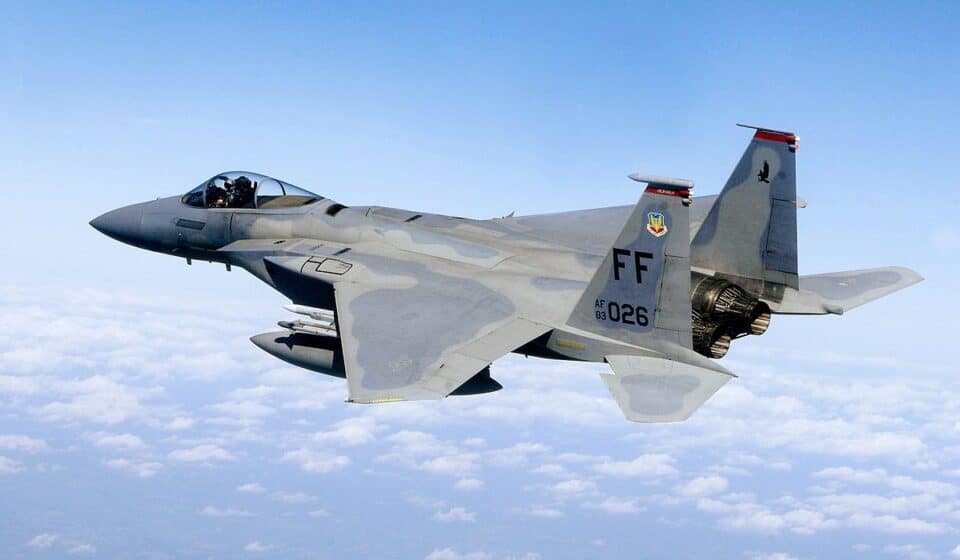Aerospace
Boeing Integrates Eagle Passive Active Warning and Survivability System onto U.S. Air Force F-15s

Recently, Boeing [NYSE: BA] began modifying the Eagle Passive Active Warning and Survivability System (EPAWSS) for the first two F-15E aircraft of the US Air Force. The electronic warfare system (EPAWSS), which will also be installed on the F-15EX Eagle II, will be given to 43 F-15Es.
EPAWSS represents a transformational overhaul to the F-15’s survivability by providing advanced capabilities to detect and counter both airborne and ground threats while also enhancing battlefield situational awareness. It was developed, produced, and integrated by the strong partnership between Boeing and BAE Systems.
According to Prat Kumar, vice president of F-15 Programs, the Eagle Passive Active Warning Survivability System improves mission effectiveness and survivability for the F-15 in contested areas and further strengthens a highly capable, lethal aircraft. “EPAWSS has effectively demonstrated that the F-15E and F-15EX can operate in a large force environment to penetrate advanced enemy air defences and improve mission flexibility.”
Boeing is a market leader in the aerospace industry and develops, produces, and maintains commercial aircraft, defence goods, and space equipment for clients in over 150 nations. As one of the top exporters from the United States, the business makes use of the skills and large network of international suppliers to enhance economic opportunity, sustainability, and community impact. The diverse workforce at Boeing is dedicated to leading with sustainability, inventing for the future, and cultivating an environment that is built on the organization’s core values of safety, quality, and integrity.

Aerospace
When Ratan Tata was denied entry to the airfield at the Aero India show, he waited

During our visit to Aero India 2019, we had the unexpected opportunity to see Ratan Tata at the event, which was a thrilling moment for us. However, there was a surprising hiccup when the security staff didn’t allow him to enter due to a lack of a security pass.
Despite this, he remained calm and patiently waited for about 20 minutes until a member of the Tata team brought him the required pass, after which he calmly proceeded inside. It was a humbling sight, showcasing his composed demeanor even in such situations.
Ratan Tata ji is not only a renowned industrialist but also a trained pilot, holding a pilot’s license. In 2007, he became the first Indian civilian to fly the F-16 Falcon during the Aero India show in Bangalore—a proud moment for the nation.
His passion for aviation extended beyond flying, as he played a key role in shaping India’s aerospace industry. Under his leadership, Tata ventured into manufacturing and maintaining aerospace components while upholding its legacy of quality. Notably, Tata’s collaboration with Airbus to develop and manufacture the C295 aircraft is a testament to its growing influence in the sector.
-

 Aviation2 months ago
Aviation2 months agoMicrosoft Flight Simulator Raises $3 Million to Bring Back the An-225 Mriya
-

 Airlines2 months ago
Airlines2 months agoQantas Engineers Stage Walkout Over Cost of Living Concerns
-

 Airlines2 months ago
Airlines2 months agoQatar Citizens Can Travel to the United States Without a Visa
-

 Aviation2 months ago
Aviation2 months agoQatar Airways bans these new Electronic Devices on plane
-

 Airlines2 months ago
Airlines2 months agoJapan Airlines Rolls Out Free Domestic Flights to International Passengers
-

 Defence2 months ago
Defence2 months agoWhich Country Has the Largest Fleet of Fighter Aircraft?
-

 Airport2 months ago
Airport2 months agoWestern Sydney Airport Welcomes Its First Plane After 6 Years of construction
-

 Aviation2 months ago
Aviation2 months agoDid you know ? Once Boeing 747 carried 1088 passenger in 1991








